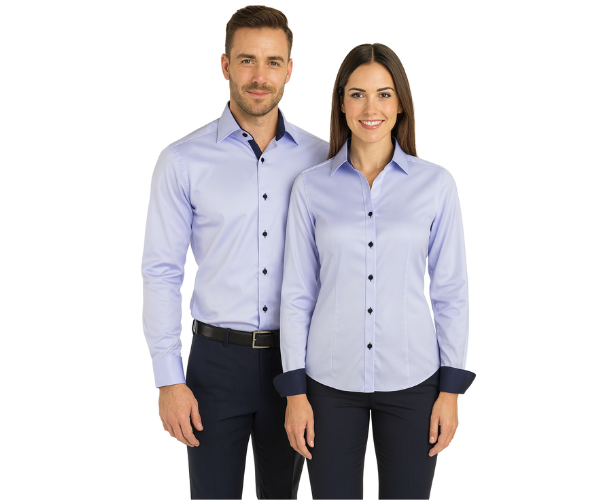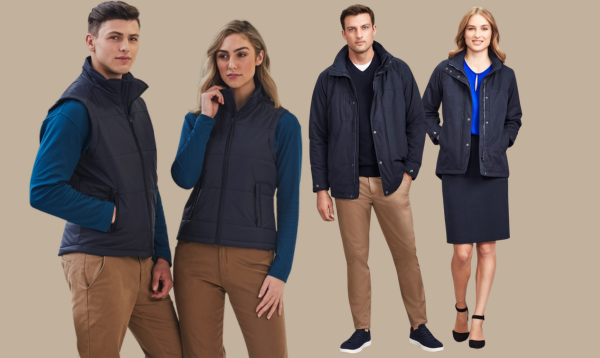Some days you’re sitting in meetings or catching up with clients. Other days, you’re out on-site, getting things done where the real action is. And your workwear? It needs to keep up with all of it.
You shouldn’t change clothes just because your day takes you from the office to the jobsite. The best uniforms are the ones that look sharp behind a desk but still handle the dirt, dust, or even the occasional coffee spill without missing a beat.
It’s all about finding that perfect balance professional enough for the boardroom, practical enough for the field. So, how do you design workwear that looks good in the office and holds up on site? Let’s find out.
1. Why a Versatile Uniform makes Sense
Ever find yourself running from a client meeting straight to the job site? Or maybe from the office to a quick on-site check? These days, jobs are not as simple as sitting at a desk or staying on-site all day. Managers drop by job locations, supervisors jump on video calls, and tradies sometimes end up in meetings. So your uniform needs to keep up with wherever the day takes you.
That is where versatile uniforms come in. They are practical, budget-friendly, and make life easier. No more juggling between office clothes and site clothes, one well-designed uniform can handle both. It saves time, keeps everyone looking sharp, and even makes laundry day a little less painful.
And you know what? It’s great for your brand. When your team looks consistent, people notice. Whether they are in the office, out on-site, or grabbing lunch between jobs, a cohesive look helps your business stand out effortlessly.
 2. Office-Friendly Touches
2. Office-Friendly Touches
Do you know that saying, first impressions matter? Well, as we know it’s true, especially when your team’s having meeting with clients or walking into an office setting. That’s why uniforms need to look smart but still feel comfortable.
Go for pieces that give off that polished but relaxed vibe like neat chinos, crisp polos, or light blazers that add a touch of class without feeling stiff. Stick to simple colours, clean lines, and maybe a small, embroidered logo to keep it professional yet subtle. And don’t forget comfort! Fabrics that breathe well and are easy to care for make all the difference, especially if your day takes you from an air-conditioned office to a quick site visit.
The important thing is to keep it balanced, nothing too shiny, too tight, or too casual. Just that effortless professional look that says, we’ve got this!
3. Jobsite-Ready Details
Once you step out of the office and go onto the jobsite, it’s a whole new game, right? Yes, of course! So,you need gear that can handle real work something tough, flexible, and low-maintenance. No one’s got time for dry clean only when there is dust, sweat, and action involved.
We highly suggest going for uniforms made with reinforced stitching, a bit of stretch for movement, and pockets that are actually useful. Breathable, quick-dry fabrics are a must on hot days, and darker or earthy colours do a great job hiding dirt while still looking neat enough for a client check-in.
And here’s a small but smart detail, shirts that look good both tucked and untucked. It might sound simple, but it makes it so much easier for your team to move from meetings to hands-on work without worrying about changing outfits. Practical, comfortable, and still polished that’s the sweet spot.
4. Blending Style + Function
Who says workwear can’t look good and be practical? Don’t you know that the magic happens when you combine the polish of corporate wear with the practicality of trade wear. That is a sweet spot. A uniform that feels good, works hard, and looks great.
Why not try pairing smart, fitted shirts or polos with flexible bottoms that let you move easily. Add in layers like a softshell jacket, a branded vest, or a lightweight utility coat perfect for when the weather changes or the jobsite gets busy. These pieces don’t just look good; they work with you.
It’s that clean, confident look without being too formal. Because at the end of the day, when your team feels good about what they’re wearing, it shows in how they move, work, and connect with customers.
5. Who Really Benefits from this Kind of Uniform?
Have you experienced those days where you’re running from a meeting straight to a job site and there is no time to change? That’s where versatile uniforms really make sense. They are made for people who need to look sharp one minute and be ready to get hands-on the next.
Imagine construction and engineering teams. A smart polo or button-up shirt paired with stretch cargo pants works perfectly polished enough for client talks, tough enough for on-site work. Property managers or project supervisors might go for chinos and a lightweight branded jacket that still look professional but are easy to move in when inspecting a site. Sales representative and showroom staff can rock clean-cut shirts, fitted pants, and maybe a softshell vest with the company logo stylish, but still practical if they need to step outside or visit a client’s space. Even service industries like logistics or maintenance teams can benefit from moisture-wicking polos and durable trousers that handle busy days while keeping them looking neat.
If your team does more than one kind of job, their uniform should too. One outfit that works anywhere from the office to the field, and everywhere in between.
6. How to Choose the Right All-Rounder Uniform
Not sure where to start when picking a uniform that can do it all? Don’t worry, it’s easier than you think. The secret is finding the right mix of comfort, function, and style that fits your team’s day-to-day work.
Start with the fabric. Go for something breathable and tough, like cotton blends or stretch polyester that can handle long days and lots of movement. These are easy to wash and dry, perfect for anyone who is always on the go. For example, polos made with quick-dry fabric or shirts with a bit of stretch are great for people moving between the office and the field.
Pick a fit that looks sharp but still feels comfy think tailored work shirts, chinos with stretch, or cargo pants that look neat but can handle site work. Stick to practical colours like navy, charcoal, or khaki that hide dirt but still look professional. Add layering pieces like softshell jackets, branded vests, or lightweight blazers so your team can adapt easily from air-conditioned offices to outdoor sites.

